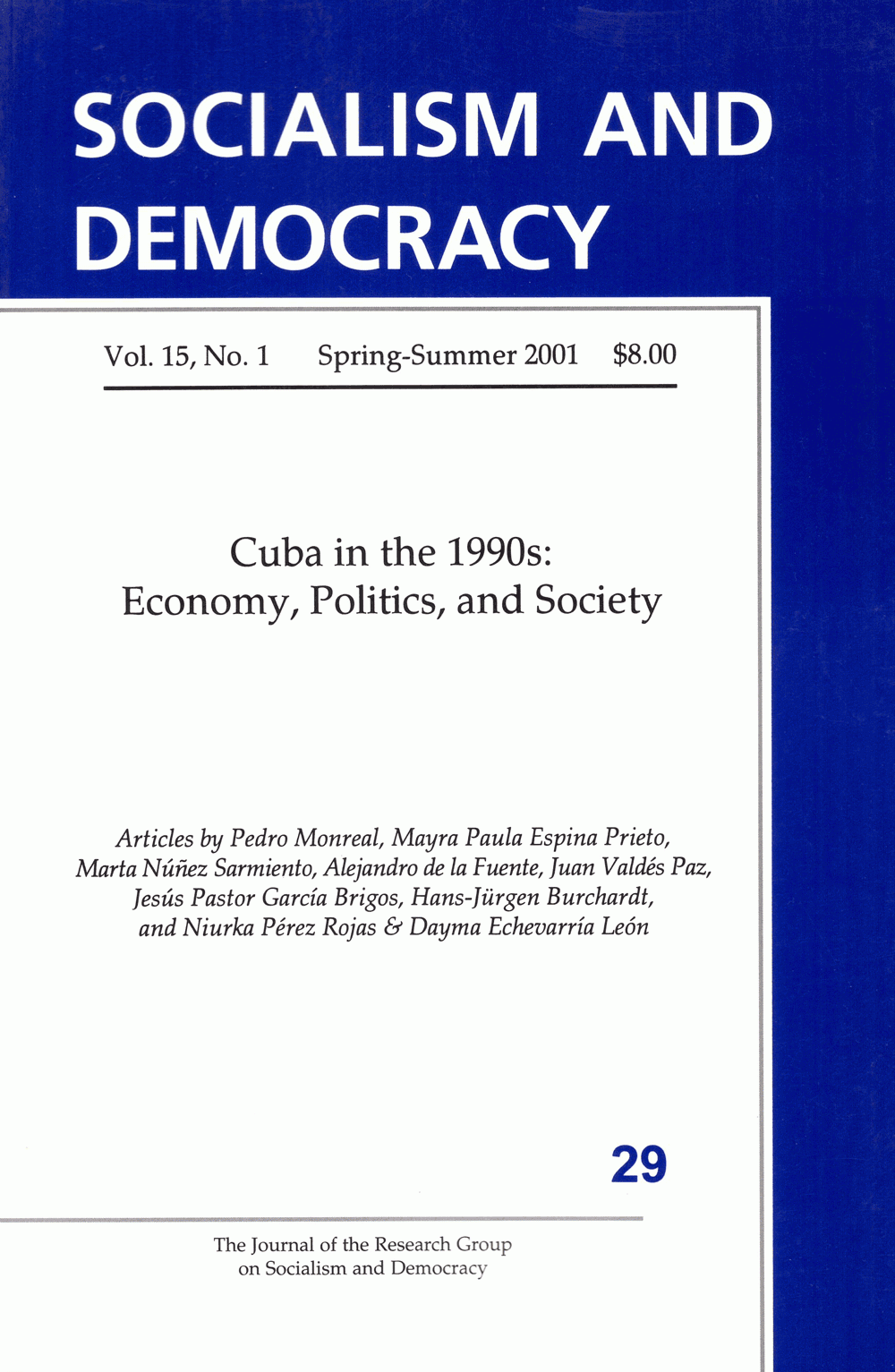Cuba's agrarian reform of 1993-a result of change subsequent to the collapse of the Socialist Bloc-may turn out to be the most far-reaching since the first agrarian reform of 1959. The two articles in this section study this process and show that it is by no means completed. At stake, argues Hans-Jürgen Burchardt, a researcher from Hannover University in Germany who has done extensive study in Cuba, is no less than the solution to agrarian problems inherited from Cuba's old export-based sugar monoculture based on huge farms or latifundia.
The reforms involved a switch between 1993 and 1996 in dominant forms of land tenure and social relations in agriculture. Massive, highly mechanized, high-input state farms staffed by salaried workers gave way to smaller, labor-intensive, low input, democratically-run, profit sharing cooperatives. State farms subdivided a portion of their land. On the resulting parcels, virtual ownership of crops and control of tools were to go rent-free to newly formed workers' collectives, formed from the state farm's workers and others. Some distribution of lands to willing family farmers or parceleros was also required. Though widespread, the new cooperative form did not cover all state lands.
All of the authors represented in this section studied the new conditions first hand. Burchardt focuses on the reform's economic implications. Niurka Pérez and Dayma Echevarría look at the effects on workers' lives of the new system of co-ops or UBPCs (Basic Units of Cooperative Production or Unidades Básicas de Producción Cooperativa). The UBPCs negotiate their production plans with their respective state farm enterprises. This requirement to negotiate production with the state farm enterprises, underemphasized in the government's initial recruitment campaign, gave rise to divergent views as the reform advanced. Pérez and Echevarría show that the UPBCs believed their autonomy would be extensive, while the state farm enterprises envisioned limited UBPC autonomy. While Burchardt and Pérez & Echevarría grant that too much UBPC autonomy might weaken the cooperatives' service to the Cuban people, they warn that insufficient autonomy will not tap the huge productivity potential in the new cooperative form.
A look at earlier agrarian reforms will place our two articles in historical context. The 1959 reform turned latifundia over to their workforces as cooperatives. A 1963 law brought two thirds of cultivated land, co-ops included, under direct state control, creating the state farm system. Rural living standards and life expectancy improved greatly. But, salaries were unrelated to yields. And farm workers were often in the odd position of purchasing their own products. In the belief that "more state property means more socialism," as Burchardt puts it, this system expanded. But compared to private farms, productivity of the state farms remained consistently lower.
To boost productivity--especially in foodstuffs--the government invited private farmers in 1977 to form more authentic cooperatives. Joining the Cooperativas de Producción Agropecuaria (CPAs) was voluntary, but strong incentives existed: compensation for land pooled, pensions, and access to home construction materials. CPAs multiplied. Results proved impressive: the CPAs' productivity outstripped that of state farms, and their share of non-sugar sales to the state for distribution grew. Food's share of Cuba's total import bill halved in 1970-80. After peaking in 1983 at 82,000, membership in the CPAs fell due to declining profitability relative to private farmers who, in 1980, had been allowed to sell at peasant markets. Shutting these markets in 1986 restored CPA profitability, but new limits on their autonomy dampened enthusiasm among the young. By 1991 collectivization using CPAs came to a standstill.
In 1990, after crisis hit the Soviet Union, there were major shortfalls in Soviet grain and oil deliveries. In April 1992 Fidel pointed out that while CPAs and small farmers produced more per acre than state farms, their deliveries to the state marketing agency were far lower, implying that they channeled produce to the black market. By 1993, imports were at half pre-1989 levels. Shortages of fuels and other inputs helped cut domestic output by some 35%. After a dismal 1992-93 sugar harvest, coupled with low prices, sugar revenues fell drastically. In March of 1993, the "storm of the century" did $200 million in damage to the agrarian sector. People did not have enough to eat.
In this context the government launched the UBPCs described in the articles below. To date, the results of this attempt to resolve Cuba's agrarian problems are mixed at best. While many UBPCs remain "unprofitable" particularly in sugar (partly due to bad harvests), non-sugar yields have tended to be somewhat better. Results vary, however, from crop to crop and area to area. To account for this mixed performance, market advocates blame disincentives in the state's below-market prices. Others point to a lack of UBPC workers' autonomy, and both articles find that UBPC workers feel state controls to be excessive. But the final verdict on this experiment remains to be given.
To put Cuban farmers' problems in perspective, we should note that international bankers have for decades imposed structural adjustment programs that dispossess Third World farmers by pricing land beyond their reach and cutting their crops' value. Cuba's small farmers, by contrast, take for granted access to land, credit, and technical assistance. Indeed, each reform of Cuban agriculture has brought ever more direct access to these basic resources. The question is one of balance: how to coordinate the co-ops while respecting their autonomy. This is the key to consolidating the success of the 1993 reform, a problem which constitutes, according to Burchardt, "the main challenge facing Cuban society."

